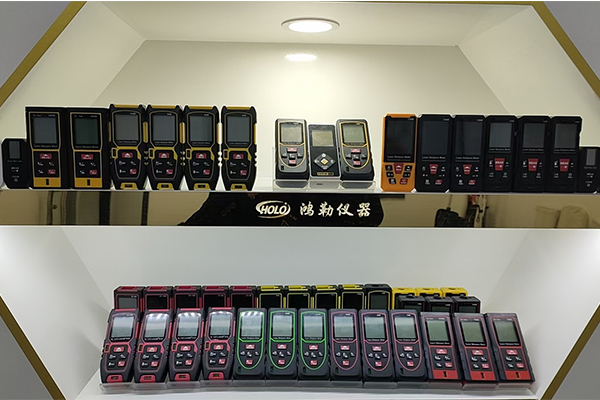Laser distance measuring tool can be categorized by measurement principles, application scenarios, and laser types.
1. Classification by Measurement Principle
Pulse-type laser distance measuring tool
Principle: Emit short laser pulses and calculate distance by measuring the time difference of reflected light (Time of Flight, TOF).
Features: Long measurement range (up to several kilometers), relatively low precision (usually meter-level).
Applications: Topographic mapping, military target ranging, satellite ranging, etc.
Phase-type laser distance measuring tool stance by modulating the laser’s phase and comparing the phase difference between transmitted and reflected signals.
Features: High precision (millimeter-level), short measurement range (usually within several hundred meters).
Applications: Architectural surveying, engineering measurement, indoor positioning, etc.
Triangulation reflection-type laser distance measuring tool
Principle: Calculate distance using the geometric relationship of the triangle formed by the laser beam, receiver, and the measured object.
Features: High precision at short distances (micrometer-level), very short range (usually a few centimeters to several meters).
Applications: Industrial inspection, robot navigation, 3D scanning, etc.
Interference-type laser distance measuring tool
Principle: Measure displacement or distance based on light interference, via changes in interference fringes.
Features: Ultra-high precision (nanometer-level), but only suitable for short-range dynamic measurements.
Applications: Precision instrument calibration, semiconductor manufacturing, etc.
2. Classification by Application Scenario
Handheld laser distance measuring tool
Portable design with a range of tens to hundreds of meters; used in construction, decoration, real estate surveying, etc.
Telescope-integrated (rangefinding telescopes)
Combined with optical telescopes, with a range up to 1-2 kilometers; used in hunting, golf, field surveying, etc.
Industrial-grade laser rangefinders
High protection level and strong anti-interference; used in warehousing, automated production lines, etc.
Military laser distance measuring tool
Long-range (over 20 kilometers), anti-interference, integrated into weapon systems or reconnaissance equipment.
Drone/airborne laser distance measuring tool
Used with LiDAR systems for terrain modeling, forest resource surveys, etc.
3. Classification by Laser Type
Visible light laser rangefinders (e.g., 650nm red light)
Easy to align; suitable for indoor or short-distance use.
Infrared laser rangefinders (e.g., 905nm or 1550nm)
Strong anti-interference and concealment; mostly used in military or long-distance measurements.
Green laser rangefinders (532nm)
Used for underwater measurement or vegetation penetration (e.g., forestry LiDAR).
4. Special Function Types
– Rangefinders with tilt sensors: Automatically calculate horizontal distance and height difference; suitable for slope measurement.
– Bluetooth/WiFi data transmission rangefinders: Support real-time data transfer to phones or computers.
– Explosion-proof laser rangefinders: Used in hazardous environments like petroleum and chemical industries.
Selection Recommendations
– Short-range high precision: Choose phase-type or triangulation reflection-type.
– Long-range measurement: Pulse-type (e.g., surveying, military).
– Daily use: Handheld (e.g., Leica, Bosch).
– Dynamic measurement: Interference-type or high-speed TOF sensors.

